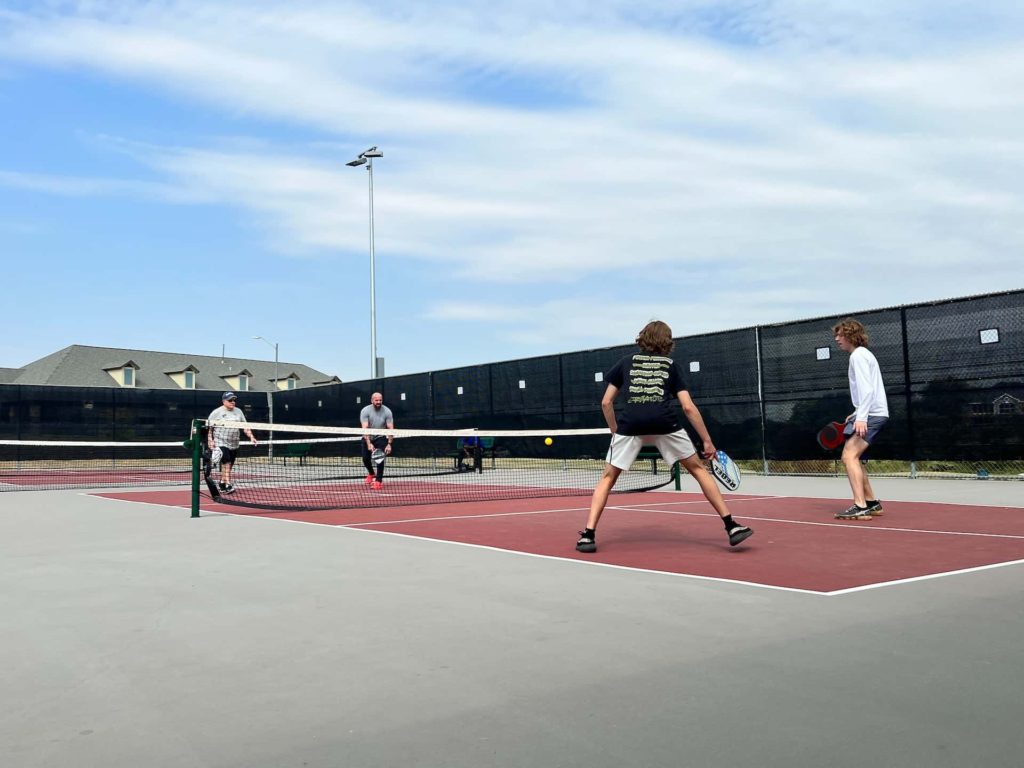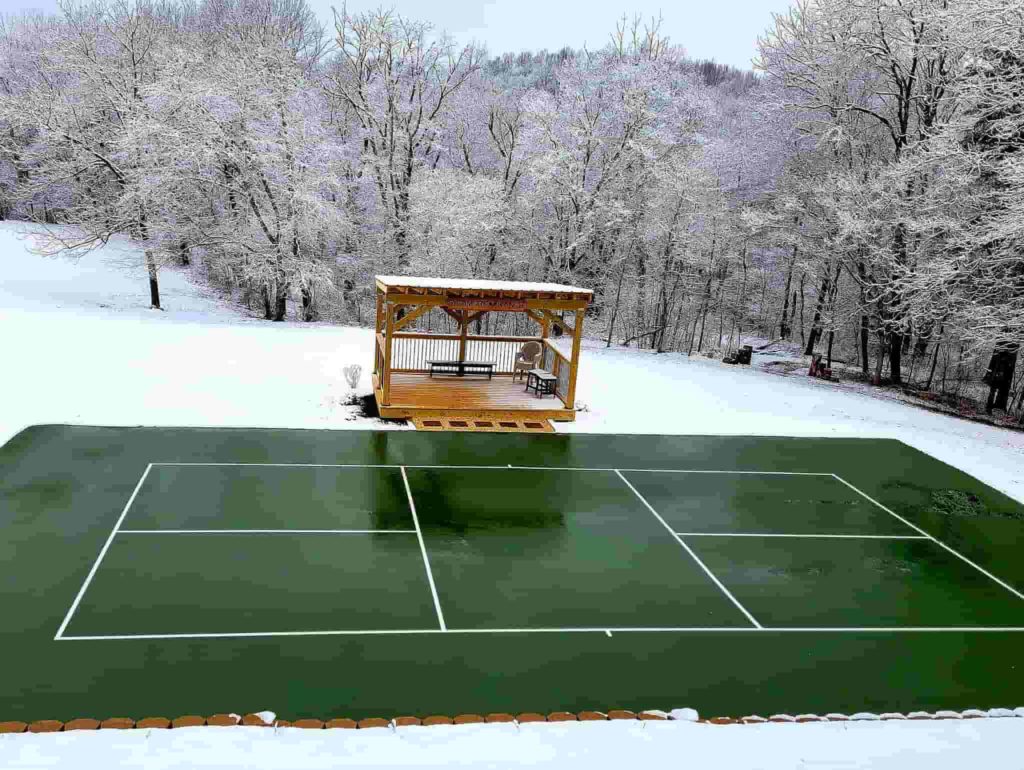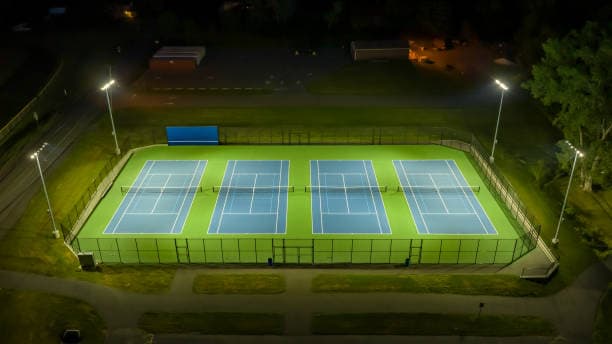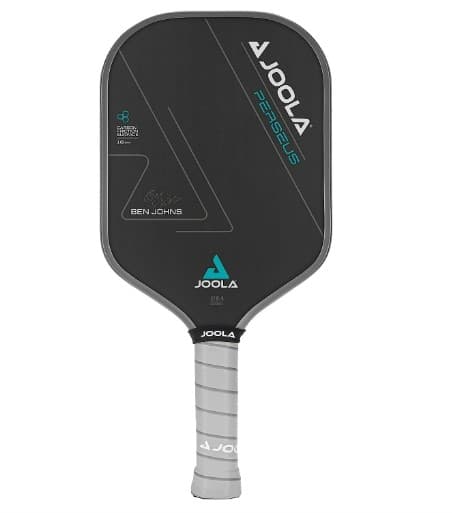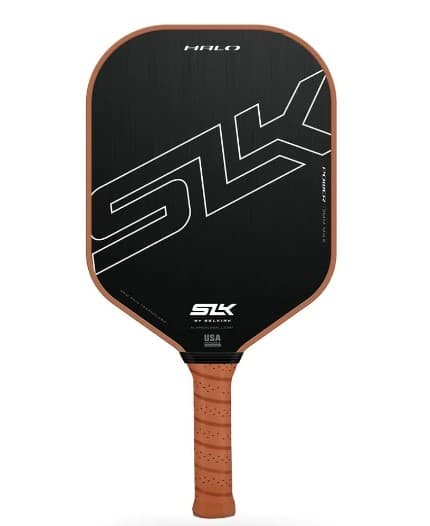How to Resolve the Pickleball Noise Issue
Pickleball, a fun and inclusive paddle sport, has been rapidly gaining popularity worldwide. With its easy-to-learn rules and emphasis on socialization and exercise, pickleball has become the go-to recreational activity for many. However, the escalating interest in pickleball has given rise to a pressing concern: noise pollution.
As players enthusiastically engage with the game on outdoor courts or indoor facilities, the resounding echoes of paddle-ball contact can sometimes disrupt nearby neighborhoods or communities. The noise generated during intense matches can be intrusive and bothersome for those living in proximity to pickleball courts.
The Noise Problem
The issue of noise associated with pickleball is not one to be dismissed lightly. While the enthusiasm exhibited by players is commendable, it is crucial to acknowledge that excessive noise can negatively impact both players’ experience as well as neighboring communities. The cacophony produced by paddle-ball collisions often reverberates through surrounding areas and disturbs individuals seeking peace and quiet.
When considering community relations and long-term sustainability of outdoor sports facilities or indoor venues where pickleball is played, addressing the noise issue becomes imperative. Failure to do so can lead to strained relationships between players and their neighbors, potential legal disputes over noise violations or zoning regulations, and even jeopardize the growth of pickleball as an accepted recreational activity.
Exploring Creative Solutions
This article aims to delve into various creative solutions that effectively tackle the pickleball noise issue while considering the needs of players, neighbors, and communities. By analyzing strategies that can be implemented by individual players as well as modifications to court design and structures, we can discover practical ways to mitigate noise without compromising the essence of this beloved sport. It is essential to strike a balance between preserving the integrity of pickleball gameplay and address concerns over excessive noise.
Through thoughtful consideration and innovative approaches we can create harmonious environments where pickleball enthusiasts can enjoy their passion while ensuring the peace and tranquility of neighboring areas. In the following sections we will explore noise reduction strategies for players themselves as well as discuss potential court design modifications that focus on minimizing sound transmission beyond court boundaries.
Understanding the Pickleball Noise Issue
Why is Pickleball Noisy?
Pickleball can sometimes generate a considerable amount of noise due to various factors. The primary source of noise in pickleball arises from the paddle’s contact with the ball during gameplay. When players strike the ball with their paddles it creates a distinct “pop” sound that can be particularly audible, especially in open or outdoor settings.
The court surface itself also plays a role in amplifying noise. Traditional asphalt or concrete surfaces tend to reflect sound waves rather than absorb them which results in increased noise levels on and around the playing area.
The Impact of Noise on Players' Performance and Enjoyment
The level of noise in pickleball can have significant repercussions on both players’ performance and their overall enjoyment of the game. Firstly, excessive noise can lead to distractions for players during crucial moments of play potentially causing them to lose focus or misjudge shots.
Such interruptions may significantly impact player performance and lead to unforced errors or missed opportunities. Moreover, persistent exposure to high levels of noise on the court can increase stress levels among players, hindering their ability to concentrate and perform at their best.
Complaints from Neighbors and Communities
The increasing popularity of pickleball has led to its rapid expansion into various residential areas and community spaces. This growth has also brought about concerns from neighbors and communities regarding excessive noise generated by gameplay. The distinct popping sound produced by paddle-ball contact can reverberate beyond court boundaries and disturb nearby residents or other activities taking place nearby.
Moreover, continuous exposure to loud noises over an extended period can disrupt the peaceful ambiance that communities strive for. To address these concerns effectively it becomes imperative for both players and community members alike to acknowledge the impact of pickleball noise and work towards finding mutually agreeable solutions.
Noise Reduction Strategies
Quieter Paddles
When it comes to reducing noise in pickleball players can make a significant impact by choosing quieter paddles. The material from which the paddle is made plays a crucial role in determining the noise levels generated during gameplay. Paddles constructed from materials like graphite or composite tend to produce considerably less noise compared to those made of aluminum or wood.
This is due to the inherent properties of these materials, such as their ability to absorb vibrations and dampen sound. Graphite paddles for instance are renowned for their excellent shock-absorbing qualities, resulting in less paddle-ball contact noise.
These paddles combine stiffness with flexibility that provide players with optimal control and power while keeping noise levels at bay. Similarly, composite paddles which consist of layers of different materials bonded together offer a balance between performance and reduced noise output. These paddles are far from noiseless but hopefully the technology continues to improve.
By investing in quieter paddles made from graphite or composite materials players can actively contribute towards minimizing the overall noise pollution associated with pickleball. For those seeking specific recommendations on quiet paddles available on the market today, several renowned brands offer high-quality options designed specifically for noise reduction.
One such example is the “Joola Perseus Pickleball Paddle” series by Joola. These paddles showcase advanced technology that effectively reduces paddle-ball contact noise without compromising performance or durability.
Additionally, the “Selkirk SLK Halo” models offered by Selkirk provide players with an exceptional combination of low-noise design and superior playability. By opting for these quieter paddle options and exploring other similar offerings from reputable manufacturers within the pickleball community, players can enjoy a more serene playing experience while exhibiting consideration towards their fellow competitors and surrounding environment.
Court Design Modifications for Noise Reduction
Explore Alternative Court Surfaces
When it comes to reducing noise on pickleball courts, exploring alternative court surfaces can prove to be a viable solution. Traditional asphalt or concrete surfaces tend to amplify sound, causing louder noise levels.
However, incorporating rubberized surfaces can significantly mitigate noise transmission. Rubberized materials possess unique properties that absorb sound waves and vibrations, thus minimizing the overall impact of noise generated during gameplay.
Benefits of Rubberized Surfaces
Rubberized surfaces offer several benefits beyond their noise-reducing capabilities. Firstly, they provide superior shock absorption compared to traditional court materials. This cushioning effect not only enhances player comfort but also reduces the strain on joints and muscles, thereby preventing injuries.
Additionally, rubberized surfaces offer improved ball bounce characteristics and excellent traction which can optimize gameplay quality. In terms of noise reduction specifically, rubberized surfaces have proven successful in various other sports.
For instance tennis courts with rubberized coatings have demonstrated substantial improvements in noise control without compromising performance or playability. This evidence suggests that implementing such surfaces in pickleball courts would be one effective strategy for addressing the persistent issue of excessive noise.
Pickleball Court Sound Barriers
In addition to exploring alternative court surfaces, implementing sound barriers around the pickleball courts can further contribute to reducing noise propagation beyond boundaries. Fencing or walls made from sound-absorbing materials are excellent options for creating effective barriers that minimize sound transfer into neighboring areas. These sound barriers work by absorbing and diffusing sound waves rather than reflecting them back into the surrounding environment.
By doing so they prevent the dispersion of excessive noise while maintaining a pleasant playing experience within the court itself. It is crucial to consider utilizing aesthetically pleasing options that blend well with the surrounding environment as this will ensure that both functional and visual aspects are harmoniously integrated.
Conclusion
Resolving the pickleball noise issue requires a multi-faceted approach that considers the needs of players, neighbors, and communities. Exploring alternative court surfaces can significantly contribute to mitigating noise levels. Moreover, implementing sound barriers around courts using fencing or walls made from sound-absorbing materials provides an effective solution to control the propagation of excessive noise. Should we start thinking about changing the design of the ball?
By incorporating these innovative design modifications into pickleball facilities and adhering to responsible playing techniques, it’s possible to strike a balance between enjoying this popular sport and respecting the peace and tranquility of neighboring areas. Let us embrace these solutions optimistically and envision a future where pickleball enthusiasts can play passionately without compromising the harmony of their communities.

